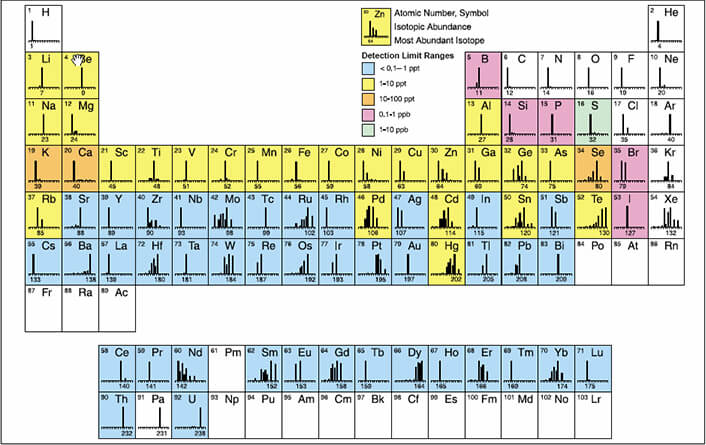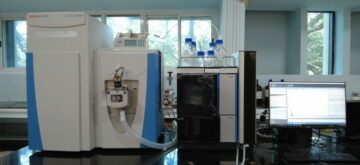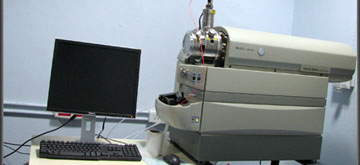Instrument Specification:
Instrument: NexION 300X – Perkin Elmer
Plasma source: Argon, 18 L / min flow rate
Measurement Limits: Parts per million to parts per trillion
Modes: Standard, Kinetic Energy Discrimination (KED), Dynamic Reaction Cell (DRC).
Accessories: Autosampler, FIAS – Flow injection atomic spectroscopy.
Components: Injector, Nebulizer, Plasma torch, Triple cone, Quadra pole, Detector (Dual

Basics of ICP-MS:
ICP-MS is a type of mass spectrometry which is capable of detecting metals and several non-metals at concentrations as low as part per trillion. This is achieved by Ionising the sample with inductively coupled plasma ( temperature of ) and then using a mass spectrometer to separate and quantify these ions. Compared to atomic absorption techniques, ICP-MS has greater speed, precision and sensitivity. However, analysis by ICP-MS is also susceptible to trace contaminants from glassware and reagents.
Schematic Diagram of ICP-MS :

Instrument Description
ICP-MS system basically offers the simplicity and convenience of a traditional collision cell together with the exceptional detection limits of a true reaction cell. Together with the instrument's Triple Cone Interface (TCI) and Quadrupole Ion Deflector (QID) technology, drift is minimized, contamination of the interface region is reduced, and routine maintenance and cleaning is kept to an absolute minimum.
Principle:
The sampled material is introduced into a high-energy argon plasma that consists of electrons and positively charged argon ions. In the plasma, the material is split into individual atoms. These atoms will lose electrons and become (singly) charged positive ions. Most elements ionize very efficiently (> 90%) in the hot plasma.
This is a small metal plate placed in the centre of the ion beam, which reflects the photons away from the detector. The ion beam enters the quadrupole mass analyser. In the quadrapole the ions are separated on the basis of their mass-to-charge ratio. Each element has its own characteristic isotopes and masses and will therefore produce its own mass spectrum.
Metals and Non-metals detected by ICP-MS:
The following metals and non-metals are detected and quantified using ICP-MS.

Application of ICP-MS:
ICP-MS is widely used for the analysis of trace elements in Environmental, Biological, Pharmaceutical, Chemical and Nuclear samples. In medical field, it is used in forensic field especially toxicology, to detect heavy metal poisoning by lead, chromium and arsenic in blood and urine samples. It is the bench mark analyser to detect heavy metal contamination in water especially drinking water.
 Search
Search Sign in
Sign in








 Total views : 237923
Total views : 237923